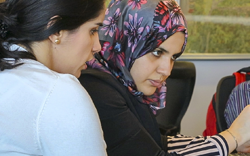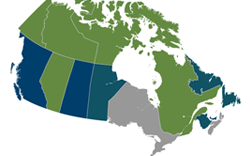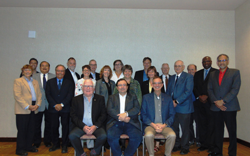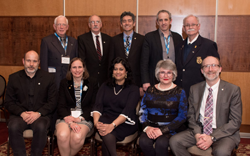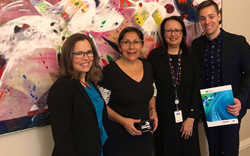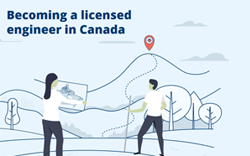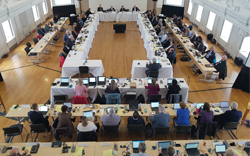President's message

2019 was a pivotal year for Engineers Canada. After a period of significant changes and reorientation over the previous several years, 2019 saw the critical first phase of work towards the execution of the Engineers Canada 2019-2021 Strategic plan. In addition to consultations and regular operational work, a huge amount of work was being done behind the scenes to plan and approve sub-strategies for key portfolios, complete the final steps of the transformative Governance, Strategic Planning and Consultation Project, and more generally lay the groundwork for big things in the years to come.
The development and Board approval of sub-strategies on diversity, Indigenous access to engineering, and government relations in 2019 mean that Engineers Canada will now be able to move forward in a clear, strategic way in these key areas. Indeed, much has already been accomplished. Notably, the approval of our sub-strategy on women in engineering under Strategic priority 3 has done a great deal in helping align the resources of regulators, educational institutions, and industry nationwide. As a corollary, it has helped clarify and solidify Engineers Canada’s role as a backbone organization. Alongside our sub-strategy on Indigenous access to engineering, also approved last year, this work on women in engineering will go a long way towards a state we all desire: a profession that becomes increasingly reflective of the makeup of Canadian society.
Last year also had its fair share of immediately visible accomplishments. Online Competency-Based Assessment was rolled out in Saskatchewan and Prince Edward Island, with plans established for more provinces and territories to follow. We also saw the first-phase delivery of our new data management system for accreditation, Tandem, under the Accreditation Improvement Program. For the first time, higher education institutions with accredited engineering programs successfully used Tandem to complete our annual Enrolment and Degrees Awarded Survey. According to their feedback, the system was well planned out and easy-to-use, providing a strong basis for improvements and deliverables still to come. In other accreditation news, in the fall, the CEAB’s Accountability in Accreditation Committee started work on our measurement framework to measure the ongoing effectiveness, trustworthiness, transparency, and efficiency of the accreditation system. By developing this much-needed program evaluation tool, we will ensure that the Accreditation Board’s work continues to become more effective, trustworthy, transparent, and efficient.
When I look at where Engineers Canada is today compared to where it was at in the beginning of 2019, I see an organization that is increasingly strategically minded, and whose resources are fundamentally aligned with the concerns and needs of the engineering profession in Canada. The provincial and territorial engineering regulators are better able to draw on the collective thinking of one another and of engineering stakeholders across the country, and the voice that Engineers Canada provides at the national level is well-positioned to advocate on behalf of the profession’s interests. All in all, it is with considerable enthusiasm that I look forward to what comes next—a pivotal year implies, all at once, a plan, a foundation, and a launching point!
Sincerely,
David T. Lynch, PhD, FCAE, FEC, FEIC, FCIC, P.Eng.
President, Engineers Canada
Strategic priority 1: Accreditation Improvement Program
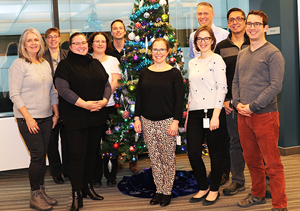
The Accreditation Improvement Program (AIP) is a coordinated effort to improve the delivery of accreditation for engineering programs and of the Enrolment and Degrees Awarded Survey. Initiated in 2017, the program saw several key advances in 2019.
For the first time ever, we completed the annual Enrolment and Degrees Awarded Survey using our new data management system, Tandem. As a part of this roll-out, users received training via a series of webinars, training materials, and on-demand support. Following completion of the survey, we sent out a feedback questionnaire, where higher education institutions generally indicated that they were able to complete the survey with minimal difficulty. They also suggested some key areas for improvement in future surveys. Working with this data and Engineering Deans Canada (EDC), we were able to identify and prioritize 17 suggested improvements for the 2020 Enrolment and Degrees Awarded Survey.
Another key element of the AIP is continual improvement. In 2019, we operationalized a continual improvement process that identifies, analyzes, and prioritizes suggested improvements to accreditation processes, and provides a process to measure the impact of improvements. This continual improvement process ensures that all accreditation-specific feedback sent to Engineers Canada is recorded and prioritized for follow-up.
In 2020, our focus will be on continued preparations of Tandem for accreditation data collection.
Strategic priority 2: Accountability in accreditation
Canadian Engineering Accreditation Board

Transparency and accountability ensure that the hard work of our staff and volunteers is received by our clients and stakeholders as it is intended. When consulting for the 2019-2021 Strategic plan Engineers Canada learned of a perception among accreditation stakeholders that the work of the Canadian Engineering Accreditation Board (CEAB) was a complicated, unknowable "black box" process, characterized by surprises and autonomous decisions. This issue was considered significant enough by the Board to warrant positioning as a strategic priority—a strategic change considered of the utmost importance, requiring appropriate resource allocation.
2019 saw substantial progress made towards addressing this issue. Early in the year, the CEAB struck the Accountability in Accreditation committee, consisting of six members: five CEAB members, and one regulator representative. Over the summer, the committee sent out a request for proposals for a consultant to assist in developing program evaluation for the CEAB, and subsequently we hired Higher Education and Beyond, an experienced team specializing in program evaluation.
With this new partnership in place, collaboration began in the fall on a consultation survey on accountability in accreditation, which was subsequently sent to the Engineers Canada Board, CEO Group, CEAB, higher education institutions (Deans and recent designated officials of undergraduate Canadian engineering education programs), and current and past members of CEAB accreditation visiting teams. This survey asked a series of questions, including: what are the qualities of a well-functioning accreditation system, what are the intended benefits and purposes of accreditation, and whose perspectives should be used by the Accountability in Accreditation Committee to assess the CEAB accreditation system?
Responses to the survey, along with several expert interviews, will now feed into an evaluation tool that is concise, focused, and meaningful, providing an assessment framework that measures the effectiveness, trustworthiness, transparency, and efficiency of the accreditation system. Work on the evaluation framework continues in 2020, with the aim of taking the first measurement in the 2020/2021 accreditation cycle.
Alongside work done by the Accountability in Accreditation committee, Engineers Canada also completed a consultation on an Engineers Canada paper entitled Curriculum content measurement: Beyond the AU, which closed on November 15, 2019. This has ultimately led to a CEAB recommendation that the minimum number of accreditation units, the units used to quantify curriculum content of an engineering program, be reduced from 1,950 to 1,850. This proposal will be voted on at the 2020 May Board meeting.
Strategic priority 3: Recruitment, Retention, and Professional Development of Women in the Profession
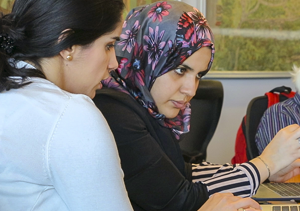
At the end of 2018, the national proportion of newly licensed engineers who were women was 18.1 per cent—well below the 30 per cent that we aim to reach by 2030. With this in mind, the Engineers Canada Board proposed to expand the scope of its efforts to promote engineering to women in the 2019-2021 Strategic plan, to include intervention at several key stages of career development—recruitment, retention, and professional development.
The resulting mandate from the regulators led to several key steps in 2019 aimed at accelerating change in this area. Early in the year, we completed an environmental scan which provided sections on the history of the 30 by 30 initiative; a summary of Champions’ activities pertaining to the recruitment, retention, and professional development of women; and the role of Engineers Canada as a national backbone organization. We also published baseline data based on the current number of women on the engineering pathway, projecting figures out to 2030. Building on this groundwork, we established four working groups to look at issues specific to key areas in the engineering pathway: K-12 education, post-secondary, early career, and industry. Through consultation with regulators, 30 by 30 Champions, and the Equitable Participation in Engineering Committee we developed action plans for the three key stages.
As was the case in many areas of our organization this year, much of this work took place behind the scenes and will cascade down to concrete actions in 2020 and beyond. Notably, however, there were still plenty of visible accomplishments throughout the year, including a collaboration with Ingenium to hold a Wikipedia Edit-a-thon on International Women in Engineering day, which focused on creating and editing profiles, and shining a light on the achievements of women engineers in Canada. The number of post-secondary Champions increased from 19 to 26, and Engineers Canada representatives presented at conferences and meetings on 30 by 30 for ABET (US), Ontario Women in Engineering Summit (ONWiE), Atlantic Connections Conference, Society of Women Engineers (US), DiscoverE (US), and IEEE Toronto.
Strategic priority 4: Competency-Based Assessment project
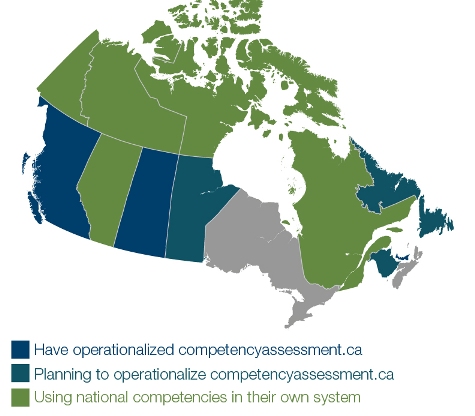
The fourth strategic priority laid out in the 2019-2021 Strategic plan is the creation of a national, online competency-based assessment system for candidates seeking licensure as engineers. Rather than having applicants describe their experience, as many assessment systems in the country have required in the past, competency-based assessment instead asks candidates to justify their competence by explaining how their past actions demonstrate their achievement of the required competencies. The implementation of this system has the potential to benefit numerous areas: transparency, consistency, staff time and resource costs, and more.
Since 2018, Engineers Canada has been funding and providing in-kind support for such a pan-Canadian system able to assess engineering experience. The system, which is adapted from one already in use by Engineers and Geoscientists British Columbia, promises a more transparent, consistent, and efficient way of measuring a candidate’s readiness for licensure as an engineer. We saw several advances on this priority this year, with the operationalization of systems in PEI and Saskatchewan, and commitments from New Brunswick, Manitoba, and Newfoundland & Labrador to begin using the system in 2020. Additionally, several other regulators across Canada are using the competencies from the national system for their own competency assessments.
Operational imperative 1: Accreditation
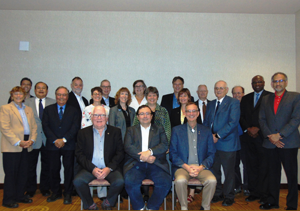
According to the 2019-2021 Strategic plan, accreditation of undergraduate engineering programs is currently the most efficient path for ensuring that Canadian engineering graduates meet the academic requirements necessary for licensure as engineers. Given this, the accreditation process must remain useful and relevant.
In 2019, our accreditation program saw numerous benefits coming out of the Accreditation Improvement Program. Based on a successful pilot rolled out in 2018, we made improvements to accreditation visiting team training. We also rolled out improvements to the way that we communicate with higher education institutions (HEIs).
As a part of our ongoing accreditation work, the Accreditation Board (CEAB) completed 13 accreditation visits and made decisions for 70 programs at 16 HEIs. Additionally, the CEAB implemented new criteria, processes, and tools:?
- Added Criteria 3.4.4.1 and 3.4.4.4 to the Policy and procedures manual, which moved requirements related to specific accreditation units from an interpretive statement into the criteria?
- Added a new clause to Appendix 1: Regulations for granting transfer credits from CEGEPs?
- Added a Complaints Policy
- Published the 2020/2021 accreditation cycle Questionnaire, Exhibit 1, and rubrics for the evaluation of the Graduate Attributes and Continual Improvement criteria which focusses less on data and more on process.
Finally, the Engineers Canada Board revised Board policy 6.9, which provides the terms of reference for the CEAB.
Operational imperative 2: Regulator relationships

One of the core reasons Engineers Canada was created was to ensure the efficient sharing of ideas and best practices between and among the regulators. This impetus characterizes all of our programs from diversity and outreach, to advocacy, to affinity programs, to engineering program accreditation. We also offer direct supports to facilitate communication among regulators and ensure the greatest degree of alignment possible—even given the varying regional mandates and resources.
One of the major ways we accomplish Operational imperative 2 is through the facilitation of meetings for the officials representing different areas of support provided by the regulators. Among the most active of these were the National Admissions Officials Group, the National Discipline and Enforcement Officials Group, and the National Practice Officials Group, each of whom met several times throughout the year.
Additionally, in conjunction with Engineers Canada’s in-person Board meetings in March, May, October, and December, we continued support of meetings for the Presidents and CEO groups. These meetings, which happen in parallel with key Board meetings, provide valuable exchanges of information, and, ultimately, stronger alignment when it comes to the work of the Board in service of the profession. At the May 2019 meetings, we introduced a new regulator presentation roundtable, which is dedicated to informing all participants about the work of each regulator and helping them see shared challenges and solutions that have worked for others.
To improve the onboarding process for newcomers to our Board and committees, at the March Board meetings, we provided an orientation session through the "First Timers Lunch." We also developed an orientation webinar program explaining the work of Engineers Canada for new regulator presidents and council members.
Operational imperative 3: Services and tools
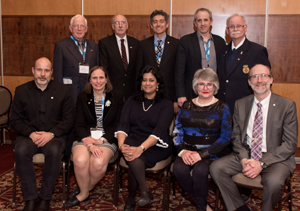
By maintaining and updating examination syllabi, the Canadian Engineering Qualifications Board (CEQB) provides areas of knowledge in engineering disciplines that regulators use to confirm non-CEAB applicants’ academic content and knowledge. Through regulator and public guidelines, CEQB supports regulators by providing information on admission, practice and environmental issues to foster consistency in processes, mobility of practionners across jurisdictions and excellence in the practice of engineering.
In keeping with previous years, 2019 saw the review, revision, and creation of a variety of syllabi, Engineers Canada papers, and guidelines:
- New Regulator guideline on the use of syllabi
- New Engineers Canada paper on environmental engineering
- Review of the Regulator guideline for assessment of engineering work experience
- Review of the Regulator guideline for the engineer-in-training program
- Review of the Basic studies syllabus
- Revised Software engineering syllabus
- Review of the Biomedical/biochemical engineering syllabus
- Revised Structural engineering syllabus
- Review of the Building engineering syllabus
Among the list above, one notable accomplishment was the creation of the Engineers Canada paper on environmental engineering. The culmination of several years’ work, this paper describes the scope of environmental engineering practice and distinguishes between three categories of work: environmental engineering, work that can be performed by engineers and other persons, and work that is performed by non-engineers. It also details the elements that define environmental engineering—safeguarding of the environment and the use of engineering principles.
In support of excellence in engineering practice, Engineers Canada also ran two more installments of its Sustainability in Practice course in partnership with Polytechnique Montréal in 2019. The spring edition saw 1,735 participants take the course, while the fall edition had 1,300 more people register to learn about the practical application of Engineers Canada’s 10 principles of sustainable development and environmental stewardship for engineers. Participants came from every province and territory in Canada, and from around the world, and were representative of a range of economic sectors including consulting engineering, government, manufacturing, education, construction, resources, oil and gas, utilities, mining, and NGOs.
Engineers Canada also maintains a national database of practitioners to assist in mobility, known as the National Membership Database. In 2019 we explored alternatives to replace the existing tool and reached agreement with regulators to maintain the same type of tool, with the same functionality, using a simpler format and clearer presentation. Project planning for this improvement begins in 2020 and the project will launch in 2021.
Operational imperative 4: National programs

Under Operational imperative 4, Engineers Canada uses the collective power of the regulators to deliver programs that benefit the engineering regulators and their members. As a national body, Engineers Canada is in a unique position to deliver these programs, because they benefit from the economies of scale.
In 2019, Engineers Canada continued to deliver Operational imperative 4 in several ways. First, we re-signed agreements with participating regulators in the Engineers Canada sponsored home and auto insurance program. Additionally, Extended Water Damage coverage was added as an endorsement to the program. This endorsement covers sudden and accidental water damage from ground and surface water entering into a home below ground. Clients in the program will also now benefit from an increase in the number of TD Insurance Auto Centres, now totalling 19 Canada-wide. These centres are the only one-stop shops in Canada where clients can speak to a claims advisor, get their car repaired, and get a rental car.
In collaboration with Manulife, Engineers Canada also secured a loyalty bonus for clients enrolled in the Engineers Canada sponsored term life program. This bonus comes in the form of premium refunds, which are applied as a credit and which result in a reduction in premiums for one year.
Finally, Engineers Canada selected Avis Budget Group as our supplier for rental cars. Individuals have access to both Avis and Budget, with the program offering corporate rates, including unlimited kilometres and a best-rate guarantee.
Additionally, as required by the 2019-2021 Strategic plan, Engineers Canada began the process of divesting itself of the PIEVC and Infrastructure Resilience Professional programs. An RFP process was completed with prospective bidders for each program, and these garnered sufficient interest to secure several viable bids. Announcements on the successful bids will be made in 2020.
Operational imperative 5: Advocating to the federal government
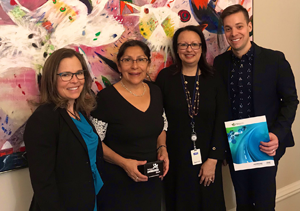
Between a federal election in October and the completion of a government relations sub-strategy mandated under the 2019-2021 Strategic plan, 2019 was a year of major planning and transition for Engineers Canada’s government relations program. Even with the substantial amount of work done to address these unique shifts, regular program work advocating to, and maintaining positive relations with, the federal government proceeded apace.
With the election of a Liberal minority government in October, Engineers Canada focused its efforts on establishing and maintaining relationships with key players, including the five engineers across all parties, who were elected:
- Sukh Dhaliwal, Surrey-Newton, British Columbia, Liberal Party of Canada
- Omar Alghabra, Mississauga Centre, Ontario, Liberal Party of Canada
- Marilyn Gladu, Sarnia-Lambton, Ontario, Conservative Party of Canada
- Steven Blaney, Bellechasse-Les Etchemins-Lévis, Quebec, Conservative Party of Canada
- Marc Garneau, Notre-Dame-de-Grâce-Westmount, Quebec, Liberal Party of Canada
Both prior to and following the election, the public affairs and government relations team engaged in in-person meetings with Members of Parliament, Senators, and senior federal officials to discuss issues pertinent to the engineering profession in Canada.
In addition to this ongoing advocacy work, the public affairs and government relations team drafted and received approval for three national position statements: "Regulation of coastal, ocean, and related subsurface engineering", "Artificial intelligence engineering technology in autonomous and connected vehicles", and "Indigenous peoples’ access to post-secondary engineering education".
Finally, the public affairs and government relations team made nine submissions to the federal government on issues or concerns for the engineering regulators and the engineering profession. Notably, this work led to some of our recommendations being included in the House of Commons Standing Committee on Indigenous and Northern Affairs committee’s report, A path to growth: Investing in the North.
Operational imperative 6: Monitoring, researching, and advising

Under the 2019-2021 Strategic plan, Engineers Canada has a role to play in proactively identifying, investigating, and explaining trends and changes that are likely to have an impact on the engineering regulators and on the engineering profession. A key part of this work is communicating research findings to regulators on an ongoing basis, to support their own decision-making and direction-setting processes. The intention is to inform and advise the regulators on changes and advances that impact the Canadian regulatory environment and the engineering profession.
Given that 2019 was a year of planning, as mandated under the current strategic plan, our focus was on completing background work and regulator consultation on a new research sub-strategy. During the November 2019 consultation with regulators, key topics to help regulators make informed decisions were identified. The plan is to select two to three subjects each year and strike subject matter expert working groups to guide the development of detailed papers. The sub-strategy consultation also included a review of Engineers Canada’s current research activities and proposed changes to improve the relevancy for regulators. There was agreement to transition from a general Emerging Areas report to delivering national papers that target specific emerging disciplines in greater detail.
This sub-strategy will be presented to the Board in May 2020 and implementation will begin immediately following.
Operational imperative 7: International mobility


As the national body representing the engineering regulators, Engineers Canada is well positioned to define the risks and opportunities associated with the mobility of work and practitioners internationally, as this impacts all regulators. By recommending actions to the regulators that manage and respond to these impacts, Engineers Canada helps inform regulatory decisions around this area in each jurisdiction In 2019, Engineers Canada began planning its new sub-strategy for this operational imperative and completed background work to support a consultation with regulators early in 2020.
In addition to maintaining existing international agreements as in years past, Engineers Canada attended the International Engineering Alliance meetings in Hong Kong.
Engineers Canada continued updating and research for the International Institutions and Degrees Database, whose mandate is to help regulators make informed decisions about international academic qualifications. A total of 1234 institutions were researched and updated as needed. Work also began on a new international mobility sub-strategy, which will go to the Board in September 2020.
Additionally, in consultation with admissions officials, we launched our improved web resource for international engineering graduates, EngineerHere.ca, on October 24, 2019. Besides improvements to layout and appearance, EngineerHere.ca features simplified, updated information created with the needs of international engineering graduates at front of mind. By the end of the year, the site had 72,787 pageviews, and a total of 22,228 users. The top two countries by proportion of visitors were India (46%) and Canada (11%), and another key highlight was the sheer diversity of countries that the site’s visits came from: Mexico, Pakistan, Nigeria, Bangladesh, Philippines, United States, Colombia, Brazil, and United Arab Emirates, to name a few.
Operational imperative 8: Promotion and outreach
Girl Guide Crest Program

The engineering crest?was created by Engineers Canada, in partnership with Girl Guides Canada, to be awarded to Guides who complete engineering-related activities under the supervision of a member of the engineering community. By participating in the program, which involves activities like exploring how vehicles work or an introduction to the concept of simple machines, girls gain a better understanding of how the world around them works. In 2019, we sent 4,410 crests to Girl Guide Units across Canada, and the program continued to grow without any additional promotion from Engineers Canada—word of mouth through the Girl Guides network is driving program growth!
Future City Program
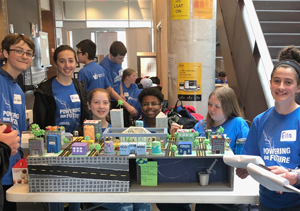
Future City is an annual competition for students in Grades 6 through 8, aimed at getting students to imagine, research, design and build cities of the future that showcase their solutions to a sustainability issue. In 2019, teachers in Ontario, New Brunswick, British Columbia, and Prince Edward Island (PEI) participated in the Future City challenge. A total of 1,376 students from 63 schools participated in the program, and over 100 teachers across the country have integrated the Future City program into their class curricula. Notably, the Future City program boasts a 50-60 per cent proportion of girls, a key differentiator of the program from other comparable programs.
National Engineering Month
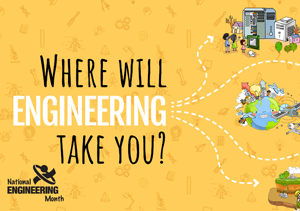
Engineers Canada provides a range of support for National Engineering Month, a country-wide celebration of the engineering profession that saw over 600 events from coast-to-coast-to-coast in 2019. As in previous years, we went with the theme "There’s a Place for You" and supported the regulators by sourcing and distributing swag for their local events. Engineers Canada’s social media campaign during the month was an enormous success, reaching over 500,000 social media users, and our outreach website—ExploreEngineering.ca—was visited more than 17,000 times. Finally, we were pleased to receive a signed greeting from the Right Honourable Justin Trudeau and a video message from Kirsty Duncan, Minister of Science and Sport.
Engineers Canada Awards
Each year, Engineers Canada honours outstanding Canadian engineers, teams of engineers, engineering projects, engineering achievements, and engineering students through the annual Engineers Canada Awards program. Recipients in 2019 were:
- Catherine Karakatsanis, M.E.Sc., P.Eng., FCAE, FEC: Gold Medal Award
- Dennis K. Paddock, P.Eng., FEC, FCSSE, FCAE, FGC (Hon.): Meritorious Service Award for Professional Service?
- Dr. Bradley Jason Buckham, PhD, P.Eng.: Medal for Distinction in Engineering Education
- Jennifer Drake, PhD, P.Eng.: Young Engineer Achievement Award
- Mae L. Seto, PhD, P.Eng., FEC: Award for the Support of Women in the Engineering Profession
- Helen Wojcinski, MBA, P.Eng., FEC, FCAE, CMC: Meritorious Service Award for Community Service
- Zenon Kripki: Gold Medal Student Award
- Inuvik Tuktoyaktuk Highway Project: National Award for an Engineering Project or Achievement
Engineers Canada Scholarships
In partnership with Manulife and TD Insurance, Engineers Canada awards six cash prizes totalling $60,000 each year to professional engineers returning to university to further their studies. The recipients of the 2018 scholarships were, in the front row from left to right:
Gregory Bak, P.Eng., is completing his master’s degree with the aim of developing his business acumen and ability to think strategically. He seeks to enhance his leadership skills so that he can better develop solutions to business problems and provide insights through quickly and accurately analyzing large amounts of data.
Kiki Chan, M.A.Sc., P.Eng., is researching the feasibility of using stock (or bouillon) cubes as a way to deliver micronutrients to people everywhere. Beyond improving our understanding of the way processing affects the stability of micronutrients, she hopes that her work will contribute to the idea that engineering and scientific principles can be used as a force for social change.
Jacky Chow, PhD, MBA, P.Eng., believes being a good engineer means being a lifelong learner and exploring other disciplines to improve one’s own designs and solutions. His research focuses on clinical medicine, including patient-centric care, the diagnosis of diseases, disease prevention, and pharmacological and surgical interventions. In time, he hopes this work will advance radiation technologies for the diagnosis, treatment, and management of cancer.
John Desnoyers-Stewart, MFA, P.Eng., is combining his backgrounds in art and engineering to develop mixed-reality experiences that allow for personal expression, social connection, and collaborative creativity. In the long-term, he hopes to continue critically engaging with emerging technology, simultaneously seeking to push the boundaries of what is possible while remaining vigilant in exposing its dangers and ensuring it benefits society.
Amalia Gil, P.Eng., wants to improve the safety of patients, physicians, and indeed all users of the healthcare delivery systems that her work will ultimately support. She says that her current studies in health science and clinical engineering have taught her much about innovating when it comes to addressing clinical challenges, improving patient safety, and optimizing the application, implementation, and management of healthcare technology.
Kevin Wallin, P.Eng., is completing his current master’s program with an eye towards his next phase: doctoral research on the mechanical behavior of clay shale. He hopes this work will advance current constitutive modelling capabilities, allowing engineers to one day model the long-term behavior of clay shale as it pertains to the design and construction of deep geological nuclear waste repositories.
Fellows of Engineers Canada
Association of Professional Engineers and Geoscientists of Alberta (APEGA)
- Ahmed Ali , FEC, P.Eng.
- John Byron , FEC, P.Eng.
- Mark Ewanishin , FEC, P.Eng.
- Paul Kavanagh, FEC, P.Geo.
- Ronald Mah, FEC, P.Eng.
- Justin McCrea, FEC, P.Eng.
- Samuel Proskin, FEC, P.Eng., PhD
- Cameron Sterling, FEC, P.Eng.
- Roy Sudipto, FEC, P.Eng.
- Charles Welsh, FEC, P.Geo.
Association of Professional Engineers and Geoscientists New Brunswick
- Jeffrey A. Underhill, FEC, P.Eng.
- Stéphanie M. Doucet-Landry, FEC, P.Eng.
Association of Professional Engineers and Geoscientists of Saskatchewan (APEGS)
- Connie M. Barsness, FEC, P.Eng
- Tonia D. Batten, FEC, P.Eng.
- Glenn C. Hussey, FEC, P.Eng
- Akindele G. Odeshi, FEC, P.Eng.
- Cheryl A. Robertson, FEC, P.Eng.
- Deborah Rolfes, FEC (Hon.)
- Rajeshkumar R. Shah, FEC, P.Eng
Engineers and Geoscientists British Columbia
- Hugh Robert Alley, FEC, P.Eng.
- Slobodan Andic, FEC, P.Eng.
- Caroline Janet Elizabeth Andrewes, FEC, P.Eng.
- Gordon Douglas Apperley, FEC, P.Eng.
- James Wesley Atwater, FEC, P.Eng.
- Belwinder Singh Barn, FEC, P.Eng.
- Douglas Wilfred Barry, FEC, P.Eng.
- Leon Alexander Bell, FEC, P.Eng.
- Michael Scott Belter, FEC, P.Eng.
- Xiaotao Bi, FEC, P.Eng., PhD
- Robin Brice Brown, FEC, P.Eng.
- Lili Bu, FEC, P.Eng.
- Calum James Buchan, FEC, P.Eng.
- Robert Campbell, FEC, P.Eng.
- Shiloh Marie Carlson, FEC, P.Eng.
- Fei Chen, FEC, P.Eng.
- Phoebe Man-Kuan Cheung, FEC, P.Eng.
- Jennifer Cho, FEC (Hon.)
- Tony Ming Yue Chong, FEC, P.Eng.
- Gabriel Cojocaru, FEC, P.Eng.
- Robert James Cowan, FEC, P.Eng. (Non-Practising)
- Marcus Dell, FEC, P.Eng.
- Bruce Der, FEC, P.Eng.
- Emmanuel Alberto Asuncion Domingo, FEC, P.Eng.
- David Bruce Dreisinger, FEC, P.Eng., PhD
- Clifford Park Hon Eng, FEC, P.Eng.
- Ann Jean English, FEC, P.Eng.
- Martin Edward Fandrich, FEC, P.Eng., PhD
- Livio Richard Gambone, FEC, P.Eng.
- Paolo Giorgio Luigi Gazzarrini, FEC, P.Eng.
- Dana Grecov, FEC, P.Eng., PhD
- Brian Joseph Griffin, FEC, P.Eng.
- Steven Eric Arthur Gustavson, FEC, P.Eng.
- Thomas Arne Haksi, FEC, P.Eng. (Non-Practising)
- Bruce Alan Hamersley, FEC, P.Eng.
- John Sorensen Hansen, FEC, P.Eng.
- Richard Greg Harms, FEC, P.Eng.
- Desmond Niall Digby Hartford, FEC, P.Eng., PhD
- Paul Jeremy Emile Hatton, FEC, P.Eng.
- Andrew William Hind, FEC, P.Eng.
- Wing Keung Patrick Ho, FEC, P.Eng.
- Jonathan Francis Holzman, FEC, P.Eng.
- Paul Francis Hoo, FEC, P.Eng.
- Thomas John Hunt, FEC, Eng.L.
- Jian Jun Jiao, FEC, P.Eng.
- Lynn Merideth Johnson, FEC, P.Eng.
- Vladimir Kahle, FEC, P.Eng.
- Foad Kasiri, FEC, P.Eng.
- Randa Khalil, FEC, P.Eng.
- Akbar Ali Khan, FEC, P.Eng., PhD
- Matthew John Kokan, FEC, P.Eng.
- Charles Josef Kotzo, FEC, P.Eng.
- Anil Kumar, FEC, P.Eng.
- Daniel Gene Kunimoto, FEC, P.Eng.
Engineers and Geoscientists British Columbia (con't)
- Kun-Yu Ezra Kwok, FEC, P.Eng., PhD
- Robert Christopher Kwong, FEC, P.Eng.
- Brian David LaCas, FEC, P.Eng.
- James Wai Wing Lau, FEC, P.Eng.
- Kyoungsik Lee, FEC, P.Eng.
- John Hsiang Yuan Lee, FEC, P.Eng.
- Simon Xiang Guang Li, FEC, P.Eng.
- Vincent Wai-Sing Li, FEC, P.Eng.
- Thomas William Lively, FEC, P.Eng.
- Kwang Victor Lo, FEC, P.Eng., PhD
- Susan Kim MacDougall, FEC, P.Eng.
- Shailendra Mahanti, FEC, P.Eng. (Retired)
- Adam Ludwik Majorkiewicz, FEC, P.Eng.
- David Peter Marriott, FEC, P.Eng.
- Colin Bruce Meldrum, FEC, P.Eng.
- Robert Dale Merritt, FEC, P.Eng.
- Sidney Mindess, FEC, P.Eng., PhD
- Ronald Edward Mitchell, FEC, P.Eng.
- Roy D. Mitton, FEC, P.Eng. (Non-Practising)
- Thomas Alexander Morrison, FEC, P.Eng.
- James Neill, FEC, P.Eng.
- Robert William Neville, FEC, P.Eng., Struct.Eng.
- Bruce C. Nicholson, FEC, P.Eng. (Non-Practising)
- John Owen Haystead Nunn, FEC, P.Eng.
- Dirk Nyland, FEC, P.Eng.
- Gerald Charles O'Hara, FEC, P.Eng.
- Christopher Hurst Page, FEC, P.Eng.
- Scott Peter William Pellow, FEC, P.Eng.
- Jude Rohan Pillainayagam, FEC, P.Eng.
- George Eugene Plant, FEC, P.Eng.
- Stefan Popovici, FEC, P.Eng., PhD
- Mark Ian Porter, FEC, P.Eng., Struct.Eng.
- Alen Postolka, FEC, P.Eng.
- Robert Eric Quiring, FEC, P.Eng., Struct.Eng.
- Clarence Mark Rebagliati, FEC, P.Eng.
- Irfan Taherali Rehmanji, FEC, P.Eng.
- Conor Charles Obrien Reynolds, FEC, P.Eng.
- Kevin Allen Riederer, FEC, P.Eng.
- Thomas Charles Ries, FEC, P.Eng.
- Alexander Harold Rivers-Bowerman, FEC, P.Eng.
- Ricardo Jesus Rojas, FEC, P.Eng.
- Bernard Henry Roy, FEC, P.Eng.
- Hamid Samani, FEC, P.Eng.
- Farrokh Sassani, FEC, P.Eng., PhD
- Johannes W. Scholte, FEC, P.Eng. (Retired)
- Kevin Hugh Schroder, FEC, P.Eng.
- Ronald Hermann Schroeder, FEC, P.Eng.
- Gary Edward Schubak, FEC, P.Eng.
- Walter Thomas Segsworth, FEC, P.Eng.
- Ramin Seifi, FEC, P.Eng.
- Robert G. Sexsmith, FEC, P.Eng. (Non-Practising)
- Douglas Stanley Sinclair, FEC, P.Eng.
- Markus Rolf Sirges, FEC, P.Eng.
- Peter Frederick Stacey, FEC, P.Eng.
- Edwin William Steele, FEC, P.Eng.
- Siegfried Fritz Stiemer, FEC, P.Eng., PhD
- Gregory Charles Stuart, FEC, P.Eng., PhD
- Alady Padmanabhan Sukumar, FEC, P.Eng., PhD
- Jude Talbot, FEC, P.Eng.
- Desikan Thomas, FEC, P.Eng.
- Willoughby Agar Trythall, FEC, P.Eng.
- Raymond Joseph Turenne, FEC, P.Eng.
- Ruben Ugarte, FEC, P.Eng.
- Victor Charles Uloth, FEC, P.Eng.
- Venkatarama Krishnan Vinnakota, FEC, P.Eng.
Engineers and Geoscientists British Columbia (con't)
- Gary Edwin Vlieg, FEC, P.Eng.
- Walter Henry Wardrop, FEC, P.Eng.
- Long Xiu Wen, FEC, P.Eng.
- Dennis Harvey West, FEC, P.Eng.
- Kenneth Wright, FEC, P.Eng.
- David Ngaw Eng Hoe Wu, FEC, P.Eng.
- Ming Wo Wu, FEC, P.Eng.
- Henry Wulkan, FEC, P.Eng.
- Gregory James Wylie, FEC, P.Eng., Struct.Eng.
- Qing Hua Xu, FEC, P.Eng.
- Gholam-Hossein Yavari, FEC, P.Eng.
- Sani Ramzi Zein, FEC, P.Eng.
Engineers Canada
- Stephanie Price, FEC, P.Eng.
Engineers Geoscientists Manitoba
- Chantelle Cabral, FEC (Hon.)
- Kyle Cumming, FEC, P.Eng.
- Lorraine Dupas, FEC (Hon.)
- Ruth Eden, FEC, P.Eng.
- Angela Moore, FEC (Hon.)
- Robert Okabe, FEC (Hon.)
- Marlene Polson, FEC (Hon.)
- Athula Rajapakse, FEC, P.Eng.
- Claudia Shymko, FEC (Hon.)
- Jennifer St. Laurent, FEC, P.Eng.
- Stirling Walkes, FEC, P.Eng.
Engineers Nova Scotia
- J.R. (Bob) Chouinard, FEC, P.Eng.
- Kent D. Lane, FEC, P.Eng.
- Katherine Risley, FEC (Hon.)
- Colleen E. Rollings, FEC, P.Eng.
- Christopher R.P. Shortall, FEC, P.Eng.
Engineers PEI
- Joshua Collins, FEC, P.Eng.
- Amy Hsiao, FEC, P.Eng.
- Jim Landrigan, FEC, P.Eng.
Ordre des ingénieurs du Québec (OIQ)
- Louise Audy, ing., FIC
- Rosa Galvez, FIC, ing
- Mohamed Ghazi Aissaoui, FIC, ing
- Gilbert Nkurunziza, FIC, ing
Professional Engineers Ontario (PEO)
- Vivender Adunuri, FEC, P.Eng.
- Magdy Attia, FEC, P.Eng.
- Roger Barker, FEC, P.Eng.
- David W. Brown, FEC, P.Eng.
- Karen Chan, FEC, P.Eng.
- Amir Fam, FEC, P.Eng.
- Jerry Fridrich, FEC, P.Eng.
- Ed Fung, FEC, P.Eng.
- Nilima Gandhi, FEC, P.Eng.
- Ranjit Gill, FEC, P.Eng.
- John Hazel, FEC, P.Eng.
- Jeganaesan Jeganathan, FEC, P.Eng.
- Artemy Kirnichansky, FEC, P.Eng.
- Lin (Victor) Lan, FEC, P.Eng.
- Annabelle Lee, FEC, P.Eng.
- John Lill, FEC, P.Eng.
- Murray MacDonald, FEC, P.Eng.
- Parisa Mahdian, FEC, P.Eng.
- Magdi Mohareb, FEC, P.Eng.
- Sohail Naseer, FEC, P.Eng.
- Alexander Ng, FEC, P.Eng.
- William Sanabria Nunez, FEC, P.Eng.
- Nicholas Pfeiffer, FEC, P.Eng.
- Zlatko Joseph Podrebarac, FEC, P.Eng.
- Steven Poste, FEC, P.Eng.
- Mario Ramirez-Roldan, FEC, P.Eng.
- Phil Riegle, FEC, P.Eng.
- Uditha Senaratne, FEC, P.Eng.
- Rohan Service, FEC, P.Eng.
- Imtiaz Shah, FEC, P.Eng.
- Steven Stang, FEC, P.Eng.
- Philip Sullivan, FEC, P.Eng.
- Elmer Ting, FEC, P.Eng.
- Cesar Trillo, FEC, P.Eng.
- Jianguo Wang, FEC, P.Eng.
Operational imperative 9: Diversity
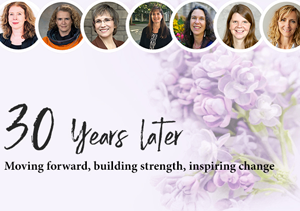
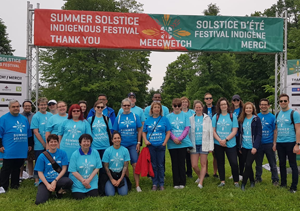

Canada’s engineering regulators consider the promotion of diversity and inclusion within the profession to be the highest non-regulatory priority. As such, considerable efforts were put into this area in 2019.
In addition to developing a sub-strategy on women in engineering delivered under Strategic priority 3, this year we continued work on increasing Indigenous peoples’ access to engineering. Among our activities, we consulted with regulators and with the Indigenous Peoples’ Participation in Engineering sub-committee to develop a sub-strategy on Indigenous Access to Engineering. This sub-strategy was ultimately approved by the Board, a significant step towards future action in this area.
In addition to sub-strategy development, we continued to support Indigenous access to engineering in direct ways. This included sponsoring student travel and attendance at the annual Canadian Indigenous Science and Engineering Society (.caISES) gathering, which was held at McGill University this year. We also supported the Canadian Indigenous Advisory Council (CIAC) to the American Indian Science and Engineering Society (AISES), by promoting events and communications for activities for Indigenous engineers and engineering students, and continuing our role as a member of CIAC in contributing to the development of communications and membership engagement strategies. Engineers Canada also established a monthly working group to support educators and administrators working on Indigenous student services and Indigenization in engineering programs across Canada under the name Indigenous Student Services in Engineering working group. The working group grew to include representation from eleven post-secondary institutions.
To commemorate the École Polytechnique tragedy, Engineers Canada partnered with Engineering Deans Canada to launch 30yearslater.ca, a website featuring the career accomplishments of women who graduated within three years of the massacre. In addition, Engineers Canada hosted a panel discussion on the impact of the massacre on the engineering profession, featuring Sandra Gwozdz (Board member and Board 30 by 30 Champion), David Lynch (President), Julie Lassonde (President of the Canadian Engineering Memorial Foundation), and Ved Proag (Professional Engineers Ontario- Ottawa Chapter).
We were also active in celebrating diversity at the local level, participating in diversity related events throughout the year. We celebrated Indigenous Peoples Day by volunteering at the Summer Solstice Indigenous Festival, and we also celebrated diversity, equity, and inclusion by walking in Ottawa’s Pride parade.
Operational imperative 10: Protecting official marks
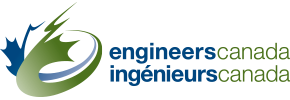 On behalf of the provincial engineering regulators, Engineers Canada holds and administers a portfolio of intellectual properties that includes official marks and registered trademarks, including registered certification marks. In 2019, we reviewed and evaluated Engineers Canada’s trademark enforcement strategy to ensure trademarks and official marks continue to be adequately used and protected. We also filed an application with the Trademarks office for the 30 by 30 mark and logo.
On behalf of the provincial engineering regulators, Engineers Canada holds and administers a portfolio of intellectual properties that includes official marks and registered trademarks, including registered certification marks. In 2019, we reviewed and evaluated Engineers Canada’s trademark enforcement strategy to ensure trademarks and official marks continue to be adequately used and protected. We also filed an application with the Trademarks office for the 30 by 30 mark and logo.


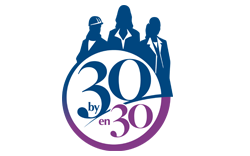
Engineers Canada is the owner of an official mark for each of the following professional engineering designations:
- ENGINEER
- ENGINEERING
- CONSULTING ENGINEER
- PROFESSIONAL ENGINEER
- P.ENG.
- GÉNIE
- INGÉNIERIE
- INGÉNIEUR CONSEIL
- INGÉNIEUR
- ING.
Working with the provincial and territorial regulators, Engineers Canada provided its consent to 44 requests in 2019 from engineers looking to register a federally incorporated company containing "engineering" or related terms in their names. Additionally, we closed six trademark opposition files (three abandoned, three settled) and commenced searches and investigations of potential marks for summary expungement (non-use), with 20 marks identified for potential proceedings.
Governance
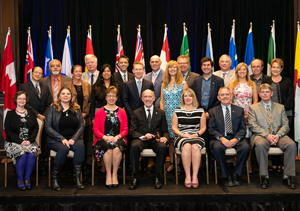
Under the 2019-2021 Strategic plan, and according to board policy, there are six "Board responsibilities," each of which was met in 2019, with the support of Engineers Canada Staff. The Board shall:
- Hold itself, its directors, and its direct reports accountable
- Sustain a process to engage with regulators through regular communication that facilitates input, evaluation, and feedback
- Provide ongoing and appropriate strategic direction
- Ensure the development and periodic review of Board policies
- Ensure the CEO maintains and acts on a robust and effective risk management system which reflects the Board’s risk tolerance level and directs Board-approved mitigation strategies
- Provide orientation of new directors, and continuing development of directors and others who work closely with the Board
Highlights from this work included the formation of the Human Resources Committee and the Finance, Audit, and Risk Committee in May 2019; the kick-off of strategic planning activities for the 2022-2024 plan in the fall; the approval of several sub-strategies defined under the strategic plan; the review and revision of 30 Board policies; and the delivery of orientation sessions for new directors.
2019 also marked the official closure of the Governance, Strategic Planning, and Consultation project, a multi-year endeavour that drew together hundreds of perspectives from across Canada to greatly clarify the purpose and strategic direction for Engineers Canada.



